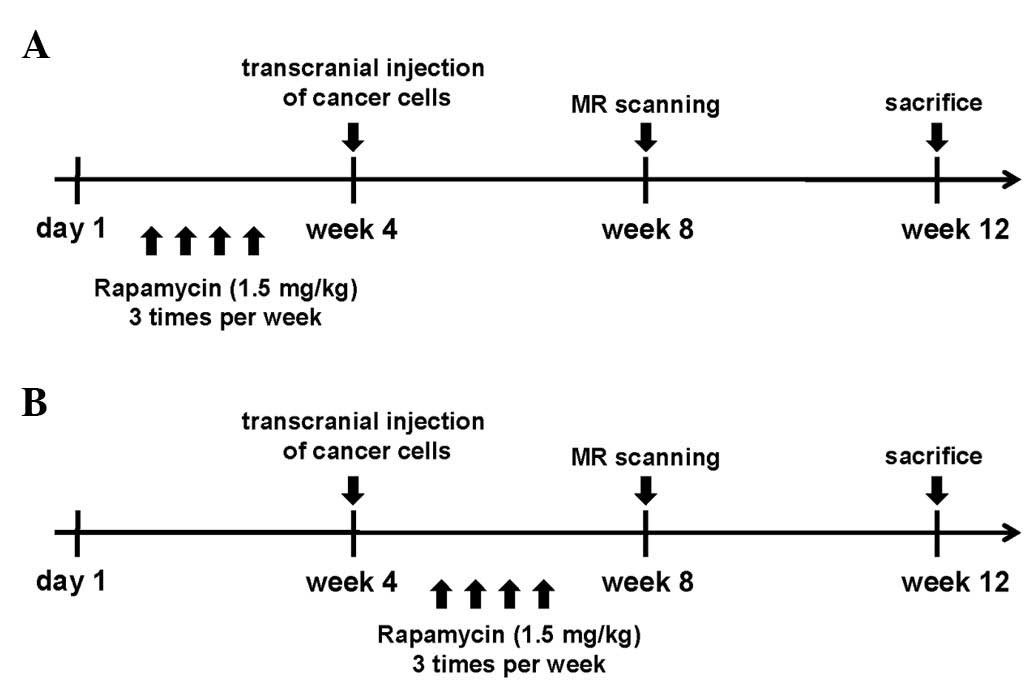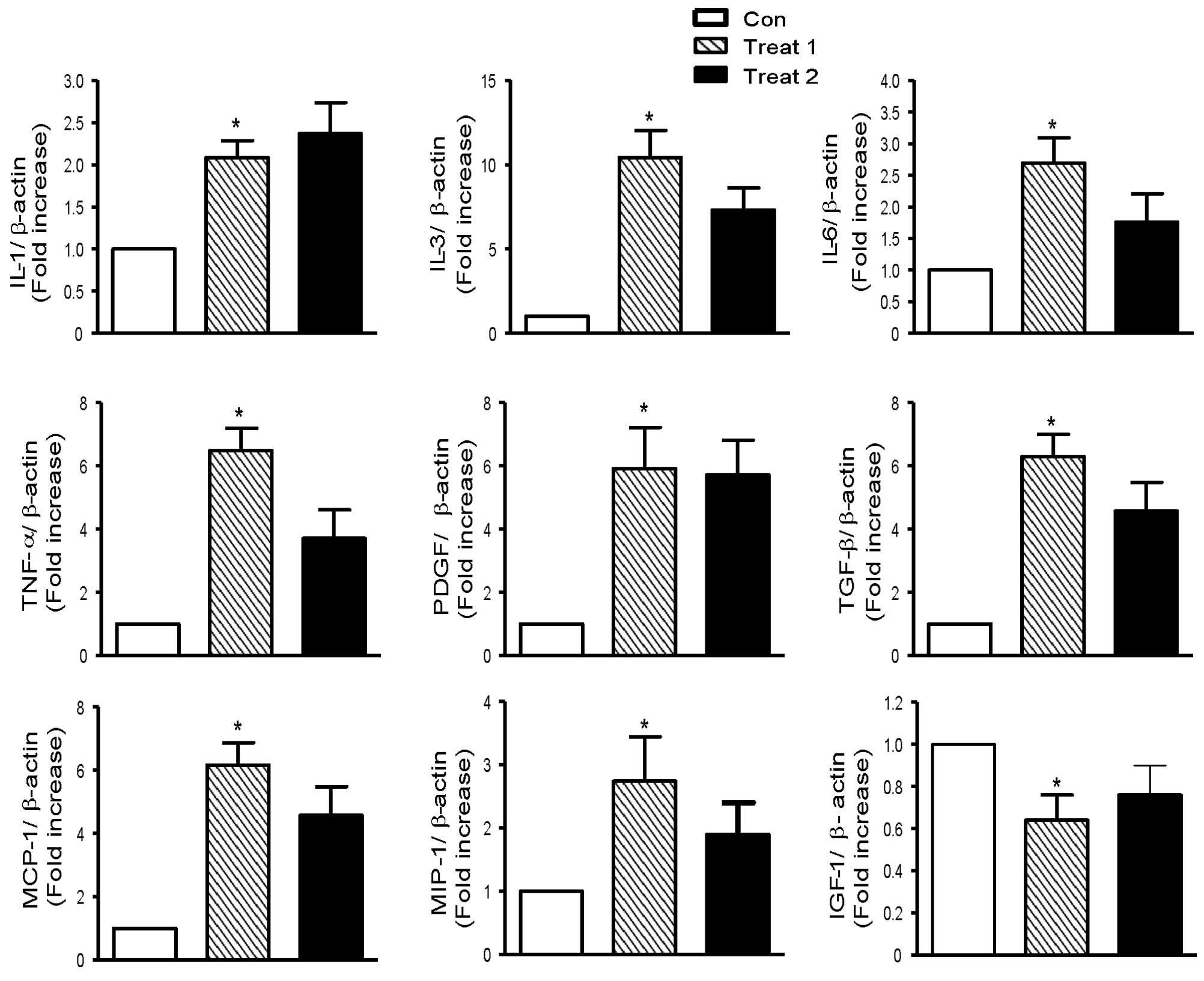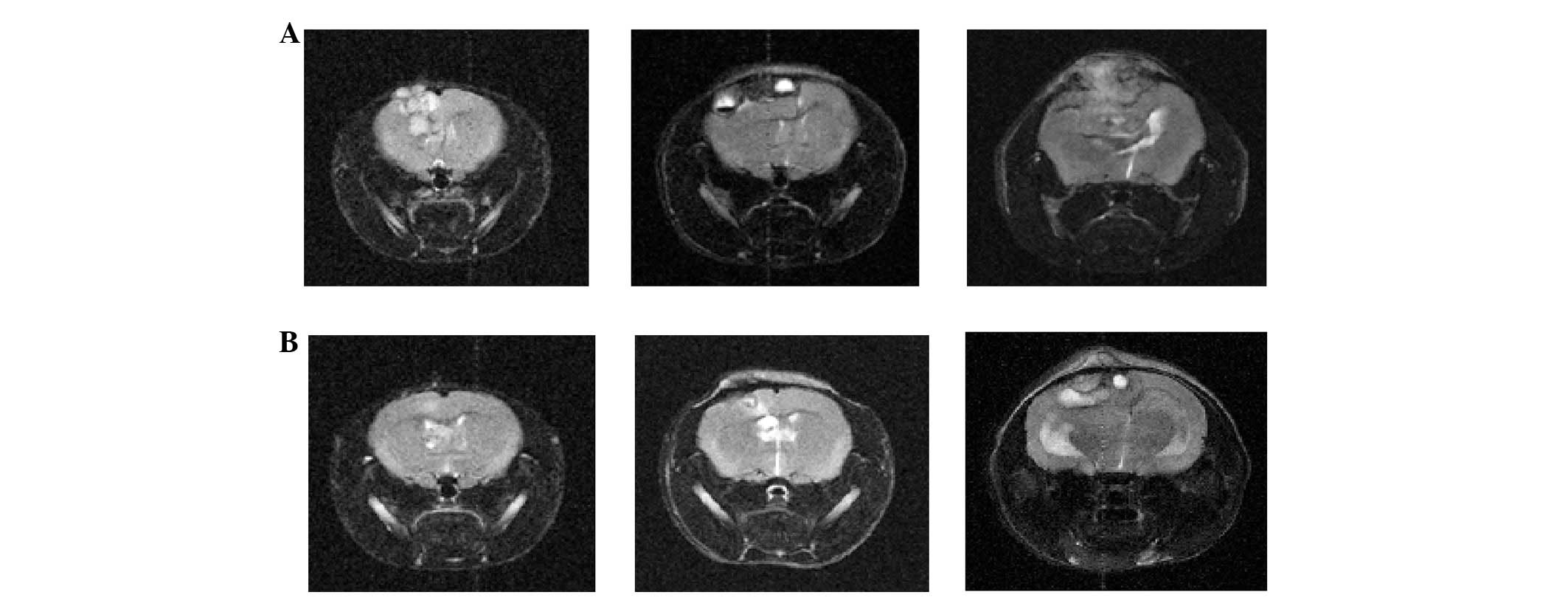|
1
|
Jemal A, Siegal R, Ward E, Hao Y, Xu J,
Murray T and Thun MJ: Cancer statistics, 2008. CA Cancer J Clin.
58:71–96. 2008. View Article : Google Scholar
|
|
2
|
Robnett TJ, Machtay M, Stevenson JP,
Algazy KM and Hahn SM: Factors affecting the risk of brain
metastases after definitive chemoradiation for locally advanced
non-small-cell lung carcinoma. J Clin Oncol. 19:1344–1349.
2001.PubMed/NCBI
|
|
3
|
Rusciano D and Burger MM: Why do cancer
cells metastasize into particular organs? Bioessays. 14:185–194.
1992. View Article : Google Scholar : PubMed/NCBI
|
|
4
|
Nicolson GL: Cancer progression and
growth: relationship of paracrine and autocrine growth mechanisms
to organ preference of metastasis. Exp Cell Res. 204:171–180. 1993.
View Article : Google Scholar : PubMed/NCBI
|
|
5
|
Sierra A, Price JE, García-Ramirez M,
Méndez O, López L and Fabra A: Astrocyte-derived cytokines
contribute to the metastatic brain specificity of breast cancer
cells. Lab Invest. 77:357–368. 1997.PubMed/NCBI
|
|
6
|
Yang I, Han SJ, Kaur G, Crane C and Parsa
AT: The role of microglia in central nervous system immunity and
glioma immunology. J Clin Neurosci. 17:6–10. 2010. View Article : Google Scholar : PubMed/NCBI
|
|
7
|
Langley RR, Fan D, Guo L, Zhang C, Lin Q,
Brantley EC, McCarty JH and Fidler IJ: Generation of an
immortalized astrocyte cell line from H-2Kb-tsA58 mice to study the
role of astrocytes in brain metastasis. Int J Oncol. 35:665–672.
2009. View Article : Google Scholar : PubMed/NCBI
|
|
8
|
Yoo JY, Yang SH, Lee JE, Cho DG, Kim HK,
Kim SH, Kim IS, Hong JT, Sung JH, Son BC and Lee SW: E-cadherin as
a predictive marker of brain metastasis in non-small-cell lung
cancer, and its regulation by pioglitazone in a preclinical model.
J Neurooncol. 109:219–227. 2012. View Article : Google Scholar : PubMed/NCBI
|
|
9
|
Bjornsti MA and Houghton PJ: The TOR
pathway: a target for cancer therapy. Nat Rev Cancer. 4:335–348.
2004. View
Article : Google Scholar : PubMed/NCBI
|
|
10
|
Guba M, von Breitenbuch P, Steinbauer M,
Koehl G, Flegel S, Hornung M, Bruns CJ, Zuelke C, Farkas S,
Anthuber M, Jauch KW and Geissler EK: Rapamycin inhibits primary
and metastatic tumor growth by antiangiogenesis: involvement of
vascular endothelial growth factor. Nat Med. 8:128–135. 2002.
View Article : Google Scholar : PubMed/NCBI
|
|
11
|
Kobayashi S, Kishimoto T, Kamata S, Otsuka
M, Miyazaki M and Ishikura H: Rapamycin, a specific inhibitor of
the mammalian target of rapamycin, suppresses lymphangiogenesis and
lymphatic metastasis. Cancer Sci. 98:726–733. 2007. View Article : Google Scholar : PubMed/NCBI
|
|
12
|
Kim SJ, Kim JS, Park ES, Lee JS, Lin Q,
Langley RR, Maya M, He J, Kim SW, Weihua Z, Balasubramanian K, Fan
D, Mills GB, Hung MC and Fidler IJ: Astrocytes upregulate survival
genes in tumor cells and induce protection from chemotherapy.
Neoplasia. 13:286–298. 2011.PubMed/NCBI
|
|
13
|
Seike T, Fujita K, Yamakawa Y, Kido MA,
Takiguchi S, Teramoto N, Iguchi H and Noda M: Interaction between
lung cancer cells and astrocytes via specific inflammatory
cytokines in the microenvironment of brain metastasis. Clin Exp
Metastasis. 28:13–25. 2011. View Article : Google Scholar : PubMed/NCBI
|
|
14
|
Carmi Y, Rinott G, Dotan S, Elkabets M,
Rider P, Voronov E and Apte RN: Microenvironment-derived IL-1 and
IL-17 interact in the control of lung metastasis. J Immunol.
186:3462–3471. 2011. View Article : Google Scholar : PubMed/NCBI
|
|
15
|
Wu YZ, Hong JH, Huang HH, Dougherty GJ,
McBride WH and Chiang CS: Mechanisms mediating the effects of IL-3
gene expression on tumor growth. J Leukoc Biol. 68:890–896.
2000.PubMed/NCBI
|
|
16
|
Jiang XP, Yang DC, Elliott RL and Head JF:
Down-regulation of expression of interleukin-6 and its receptor
results in growth inhibition of MCF-7 breast cancer cells.
Anticancer Res. 31:2899–2906. 2011.PubMed/NCBI
|
|
17
|
Suarez Pestana E, Björklund G, Larsson R,
Nygren P, Nilsson K and Bergh J: Effects of interferons and tumour
necrosis factor-alpha on human lung cancer cell lines and the
development of an interferon-resistant lung cancer cell line. Acta
Oncol. 35:473–478. 1996.PubMed/NCBI
|
|
18
|
Tse JC and Kalluri R: Mechanisms of
metastasis: epithelialto-mesenchymal transition and contribution of
tumor microenvironment. J Cell Biochem. 101:816–829. 2007.
View Article : Google Scholar : PubMed/NCBI
|
|
19
|
Yu J, Ustach C and Kim HR:
Platelet-derived growth factor signaling and human cancer. J
Biochem Mol Biol. 36:49–59. 2003. View Article : Google Scholar : PubMed/NCBI
|
|
20
|
Raffaghello L, Cocco C, Corrias MV,
Airoldi I and Pistoia V: Chemokines in neuroectodermal tumour
progression and metastasis. Semin Cancer Biol. 19:97–102. 2009.
View Article : Google Scholar : PubMed/NCBI
|
|
21
|
Zhang J, Patel L and Pienta KJ: CC
chemokine ligand 2 (CCL2) promotes prostate cancer tumorigenesis
and metastasis. Cytokine Growth Factor Rev. 21:41–48. 2010.
View Article : Google Scholar : PubMed/NCBI
|
|
22
|
Nakasone Y, Fujimoto M, Matsushita T,
Hamaguchi Y, Huu DL, Yanaba M, Sato S, Takehara K and Hasegawa M:
Host-derived MCP-1 and MIP-1α regulate protective anti-tumor
immunity to localized and metastatic B16 melanoma. Am J Pathol.
180:365–374. 2012.
|
|
23
|
van Deventer HW, Serody JS, McKinnon KP,
Clements C, Brickey WJ and Ting JP: Transfection of macrophage
inflammatory protein 1 alpha into B16 F10 melanoma cells inhibits
growth of pulmonary metastases but not subcutaneous tumors. J
Immunol. 169:1634–1639. 2002.PubMed/NCBI
|
|
24
|
Wu Y, Brodt P, Sun H, Mejia W, Novosyadlyy
R, Nunez N, Chen X, Mendoza A, Hong SH, Khanna C and Yakar S:
Insulin-like growth factor-I regulates the liver microenvironment
in obese mice and promotes liver metastasis. Cancer Res. 70:57–67.
2010. View Article : Google Scholar : PubMed/NCBI
|
|
25
|
Wu Y, Yakar S, Zhao L, Hennighausen L and
LeRoith D: Circulating insulin-like growth factor-I levels regulate
colon cancer growth and metastasis. Cancer Res. 62:1030–1035.
2002.PubMed/NCBI
|
|
26
|
Sehgal SN, Baker H and Vézina C: Rapamycin
(AY-22,989), a new antifungal antibiotic. II Fermentation,
isolation and characterization. J Antibiot. 28:727–732. 1975.
View Article : Google Scholar : PubMed/NCBI
|
|
27
|
Zhao H, Cui K, Nie F, Wang L, Brandl MB,
Jin G, Li F, Mao Y, Xue Z, Rodriguez A, Chang J and Wong ST: The
effect of mTOR inhibition alone or combined with MEK inhibitors on
brain metastasis: an in vivo analysis in triple-negative
breast cancer models. Breast Cancer Res Treat. 131:425–436. 2012.
View Article : Google Scholar : PubMed/NCBI
|
|
28
|
Luan FL, Ding R, Sharma VK, Chon WJ,
Lagman M and Suthanthiran M: Rapamycin is an effective inhibitor of
human renal cancer metastasis. Kidney Int. 63:917–926. 2003.
View Article : Google Scholar : PubMed/NCBI
|
|
29
|
Yang Z, Lei Z, Li B, Zhou Y, Zhang GM,
Feng ZH, Zhang B, Shen GX and Huang B: Rapamycin inhibits lung
metastasis of B16 melanoma cells through down-regulating alphav
integrin expression and up-regulating apoptosis signaling. Cancer
Sci. 101:494–500. 2010. View Article : Google Scholar : PubMed/NCBI
|
|
30
|
Patel V, Marsh CA, Dorsam RT, Mikelis CM,
Masedunskas A, Amornphimoltham P, Nathan CA, Singh B, Weigert R,
Molinolo AA and Gutkind JS: Decreased lymphangiogenesis and lymph
node metastasis by mTOR inhibition in head and neck cancer. Cancer
Res. 71:7103–7112. 2011. View Article : Google Scholar : PubMed/NCBI
|
|
31
|
Hussein O, Tiedemann K, Murshed M and
Komarova SV: Rapamycin inhibits osteolysis and improves survival in
a model of experimental bone metastases. Cancer Lett. 314:176–184.
2012. View Article : Google Scholar : PubMed/NCBI
|
|
32
|
Langley RR and Fidler IJ: Tumor cell-organ
microenvironment interactions in the pathogenesis of cancer
metastasis. Endocr Rev. 28:297–321. 2007. View Article : Google Scholar : PubMed/NCBI
|
|
33
|
Gupta GP and Massagué J: Cancer
metastasis: building a framework. Cell. 127:679–695. 2006.
View Article : Google Scholar : PubMed/NCBI
|













